A series of paintings from Ben Quilty's Inhabit (2010) series. Courtesy the artist and Grantpirrie.
When I wrote this profile of the artist Ben Quilty in 2008, the artist's career was thriving. In the years that followed his career skyrocketed fuelled in part by his win of the Doug Moran National Portrait Prize in 2009 and the Archibald Prize in 2011. He remains one of the most acclaimed contemporary artists in Australia.
The town of Robertson is only an hour-and-a-half from Sydney, but this quaint corner of New South Wales seems a world away from the grit and grime of urban life. More like an English village than a rural Australian town, Robertson, with the beauty and tranquillity of its green undulating hills and its proximity to Sydney, is the perfect haven for artists, but perhaps an unlikely place to find one like Ben Quilty.
Quilty is the first to laugh and to admit that the imagery in his art isn’t attractive: “Oh, they are all ugly but, you know, it’s bizarre – I couldn’t think of making them beautiful.”
His studio, which is in the centre of town, has recently been inhabited by mammoth, nightmarish paintings of grimacing skulls with snakes writhing from their mouths. Past subjects for Quilty’s art have included his old Torana, oozing burgers and anthropomorphic cars.
A recent series of portraits of his young son, Joe, and his nephew, Jude, demonstrate that Quilty doesn’t even subscribe to the glorification of babies.
Joe appears in his father’s work not as a beatific little darling but as a squirming, screaming bundle of fury with an engorged head. Enlarged portraits of the artist and his mates, shown paralytic from drinking or caught the day after with a brutal hangover, are similarly grotesque.
It’s not that Quilty’s work is totally lacking in beauty. Since his first solo exhibition in 2001, viewers have been entranced by his application of dense blocks of oil paint to create lush and creamy surfaces that beg to be touched.
One of Australia’s most acclaimed and collectable painters, it would be easy to portray Quilty as a renegade artist, a former wild child from Kenhurst (in north-west Sydney) who came good.
Quilty pursued painting at Sydney College of the Arts in the early ’90s, a time when the medium was seen as dead and, in his words, “very uncool”. “It was just what I wanted to do and was interested in doing,” Quilty recalls. “None of my friends knew why I was studying art, but on the weekends they’d sit around taking acid, watching me draw on their bedroom walls, and go, ‘Whoa, look at that!’”
At art school Quilty began to grapple with the imagery and concepts that have defined his work, such as the destructive and irresponsible behaviour of young men, which he knows first-hand. He says that in their teens and early 20s, he and his friends were active participants in a culture dominated by fast cars, fast food, drug taking and heavy drinking.
“That period of our lives, becoming adult males, is what has interested me the most because it was the most extreme period in my own life,” Quilty says. “All of my friends are intelligent guys from nurturing family backgrounds, but we all went nuts. I always wondered why it was happening, this psychotic behaviour of young men, but I knew it was something I was going to do if [other people] liked it or not.”
For his two solo exhibitions this year, Quilty has been creating biro and watercolour works on paper and paint-laden canvases that feature the skull imagery that has been a constant in his work. “I came across the skull thing eight years ago,” he recalls. “While buying shirts for my little cousins for their birthdays and Christmas, I found that all the clothes for young boys had skulls on them. It’s such a weird concept, for a little kid to have death on their clothing.”
However, the skull and related symbols do resonate in the culture of young males, which tends to focus on recklessness and disavow mortality. “I think that the devils and related iconography when you are an 18-year-old male, smoking and drinking too much, are images of rebellion where there is nothing to rebel against. They are kind of meaningless,” Quilty says.
Most of his paintings are created quickly, though lately he has accelerated the process through Rorschaching (creating a mirror imprint). In the context of Quilty’s themes, the technique is apt, given that the Rorschach ink blot was used in clinical psychology to facilitate understanding of personality and development and to assess adolescents engaged in risk-taking and acting out.
The Rorschaching was partly inspired by Quilty’s 2007 residency in Barcelona. “You walk into these tiny cathedrals in Spain and everything is perfectly balanced and amazingly ornate and designed,” he says, adding, “I guess I became more involved in religious iconography of the counter-religious kind – skulls, devils, darkness and evil – in an over-the-top kind of way.”
While Quilty is interested in social critique in his works, he says, “They have to have a sense of humour, otherwise there is no redemption. It just gets too dark and I don’t think there is any point in it being that dark.”
This story was first published in the November 2008 issue of Mindfood magazine.



